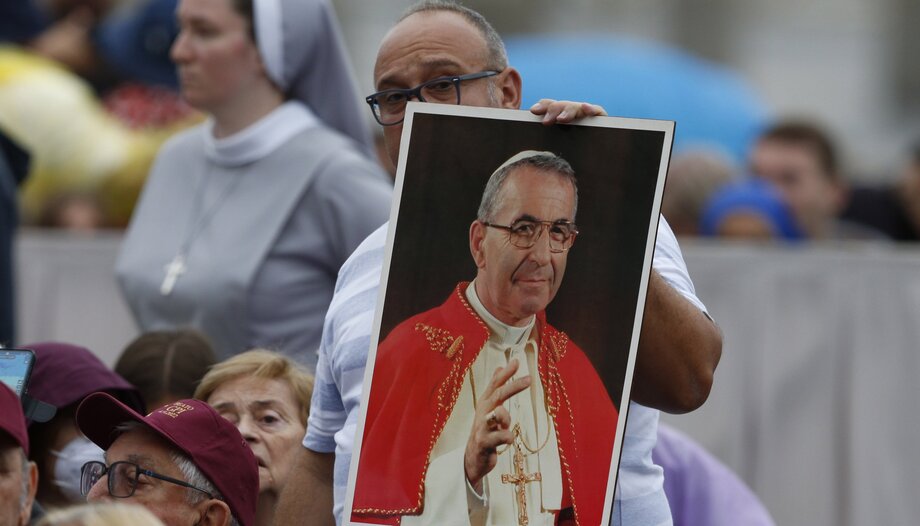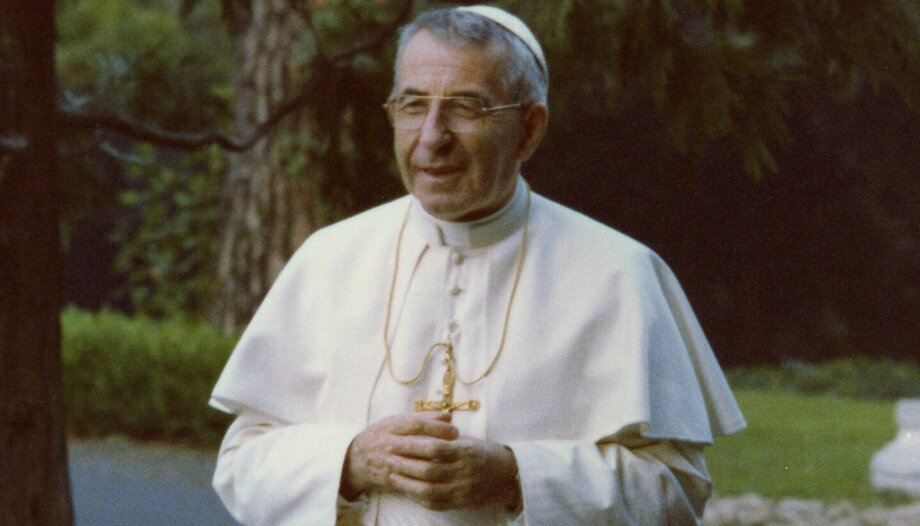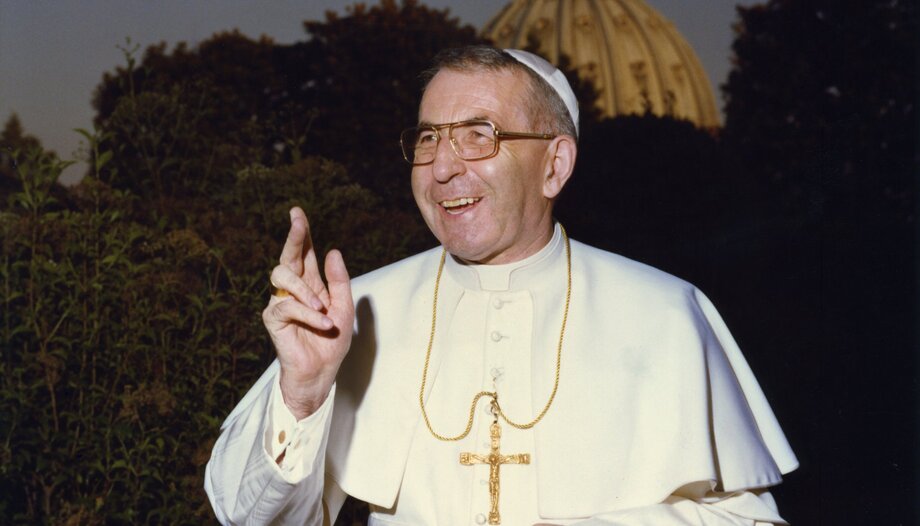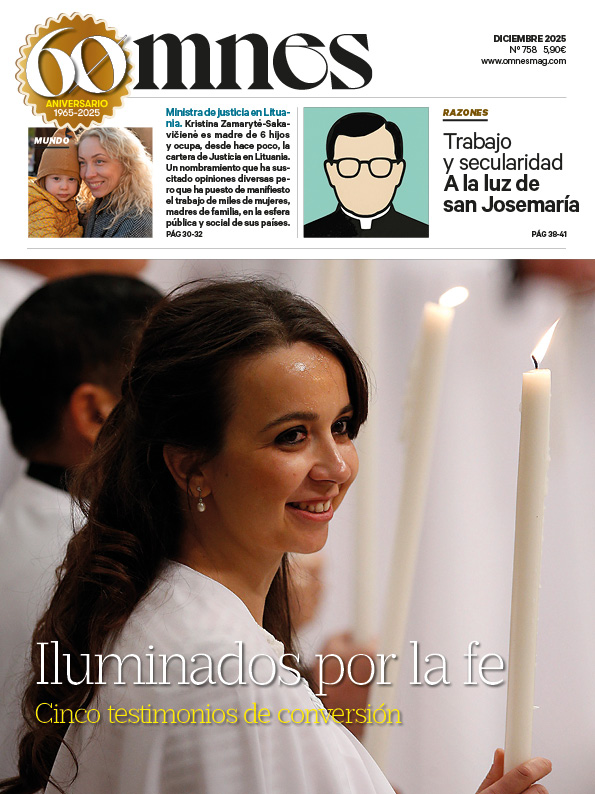On September 4, 2022, Pope Francis presided over the ceremony for the beatification of John Paul I. Months earlier, he approved the decree of the Congregation for the Causes of Saints on a miraculous cure attributed to his intercession.
In order to understand who this pope was in his historical context, it seems to me that it would be useful to offer a few brief glimpses of the situation of the Church in the 1970s.

The post-conciliar Church
In the book "Dialogues with Paul VI" by the French writer Jean Guitton, Pope Montini glimpsed a state of waiting, of openness, of renewal, on which the appearance of the fruits of the Second Vatican Council would depend. Among other things, Paul VI sentenced: "The post-conciliar period will be, as has been well said, a constant creation. The Council has opened the way, it has sown the seeds, it has given guidelines. But history teaches us that the times following the Councils are times of inertia and problems (...) I repeat once again that Catholics must not succumb to the temptation to call everything into question as a result of the Council; this is the great temptation of our contemporaries; it is an omnipresent temptation in this historical period; the temptation to start all over again, starting from scratch".
As Paul VI had predicted, problems arose after the Council. The so-called post-conciliar period manifested itself in the crisis of priests, religious and laity. The longed-for springtime did not come, but a dark autumn of doctrinal confrontation and a decline in priestly and religious vocations. If the sessions of the Council had been lived with a certain optimism inside and outside the Church, the post-conciliar period was characterized by crisis and difficulties in its application. There were symptoms of disintegration in the life of the Church caused by interpretations and ideas foreign to the texts of the Council.
Paul VI deplored the incorrect interpretations of the conciliar texts, the experiments on the celebration of the Mass and the attempts to totally reform the Church, both in law and in dogma. Symptoms of disintegration in the life of the Church caused by ideas alien to the letter of the Council were manifested.
Time of crisis
In "Memoria en torno a mis escritos", De Lubac cried out against the self-destructive and ungrateful attitude of certain ecclesiastics, who did not appreciate the efforts made during the Council: "The post-conciliar period was a time (and still is) of systematic and multiform opposition to the papacy. Paul VI was its first victim. I have greatly admired this pope. The most contradictory judgments have been passed on him; he has often been unjustly criticized and, at times, unworthily slandered."
In his Memoirs, Danièlou lamented the seepage of worldly and dissolving ideas into the Church, and acknowledged the opening after the Council of a paradoxical time of crisis as a consequence of a false interpretation of Vatican II.
The historian Jedin criticized the abuses of the liturgical reform, such as the almost total elimination of the use of Latin in the face of the introduction of the vulgar language in worship. This criticism was strongly opposed by the secretary of the post-conciliar liturgical commission Annibale Bugnini.
The sociologist of religions Arnaldo Nesti wrote that the Council's reforms and attempts at change were more apparent than real. Consequently, "for everything to remain as it is, everything must change," as in Tomasi di Lampedusa's novel The Leopard.
It was in this delicate situation of the Church that Paul VI died in the summer of 1978.
A 33-day pontificate
John Paul I has gone down in history for the brevity of his pontificate, for his smile and for being the last Italian pope for more than four centuries to date.
After the death of Paul VI, the Patriarch of Venice, Albino Luciani (1912-1978), occupied the Petrine See. He was a simple man, formed in a humble Christian family, the eldest of four brothers. Following in the footsteps of St. John XXIII and St. Paul VI, he joined their names as a sign of continuity with his two predecessors.
John Paul I's pontificate lasted thirty-three days. He did not have time to write an encyclical, nor even to move his books and things to the Vatican. The "pope of the smile" died suddenly on September 29, 1978.
Letters of John Paul I
As patriarch of Venice, moved by his catechetical zeal, he embarked on the enterprise of publishing a monthly letter, whose addressee was a famous personage of the past, such as the writers Chesterton, Dickens, Gogol and Péguy. This peculiar collection of letters was published under the title Ilustrísimos señores. Letters from the Patriarch of Venice (Madrid, BAC, 1978).
Undoubtedly, the most daring and profound letter was addressed to Jesus Christ. The missive ended thus: "I have never felt so discontented in writing as on this occasion. It seems to me that I have omitted most of the things that could be said about You and that I have said badly what I should have said much better. I am consoled only by this: the important thing is not that one writes about Christ, but that many love and imitate Christ. And, fortunately, in spite of everything, this is still happening today as well."

John Paul I and Opus Dei
A few weeks before he was elected pontiff, he had published in a Venetian magazine an article about the Opus Deientitled "Searching for God in daily work" ("Gazzetino di Venezia," July 25, 1978). Among other things, he dared to make a comparison between St. Josemaría Escrivá and St. Francis de Sales: "Escrivá de Balaguer surpasses Francis de Sales in many aspects. The latter, too, advocates holiness for all, but seems to teach only a 'spirituality of the laity' while Escriva wants a 'lay spirituality'. That is to say, Francis almost always suggests to the laity the same means practiced by religious with the appropriate adaptations. Escriva is more radical: he speaks directly of materializing, in a good sense, sanctification. For him, it is the material work itself that must be transformed into prayer and holiness".
His simple writings and his captivating smile convey the image of a man of God, whom we will soon see on the altars, like his predecessor St. Paul VI and his successor St. John Paul II.
The Church after John Paul I
John Paul I's successor decided to keep his name as a sign of continuity. John Paul II tried to give life to the spirit of the conciliar documents, which his predecessor had not had time to do. One of the texts where one could see the Polish pope's harmony with John Paul I and also with Paul VI is the Apostolic Exhortation "The Church and the Church".Christifideles laici" (1988). In this document, John Paul II affirmed that the Church had a secular dimension. In number 9, he asked himself who were the lay faithful and answered with the definition of "Lumen Gentium"All the Christian faithful, with the exception of members of holy orders and those of the religious state".
Number 15 of the document deepened the secular nature of the laity who have the mission of being leaven in the world: "God, who has entrusted the world to men and women, so that they may participate in the work of creation, free it from the influence of sin and sanctify themselves in marriage or celibacy, in the family, in the profession and in the various social activities".
The universal call to holiness
Following the teaching of the Second Vatican Council, John Paul II recalled the universal call to holiness of all the baptized, in number 16: "The lay faithful are called, in full title, to this common vocation, without any difference with respect to the other members of the Church". Furthermore, the pontiff encouraged all Catholics to participate in politics, in culture and in all activities where they can transform and improve the world. Finally, in number 60, he recommended the need to receive spiritual formation and particularly to know the social doctrine of the Church.
As I see it, St. John Paul II took up the brief but profound legacy of his predecessor in this and other documents. Let us hope that we will soon be able to write St. John Paul I.
Researcher at the University of Navarra and author of the book History of the Popes in the 20th century







